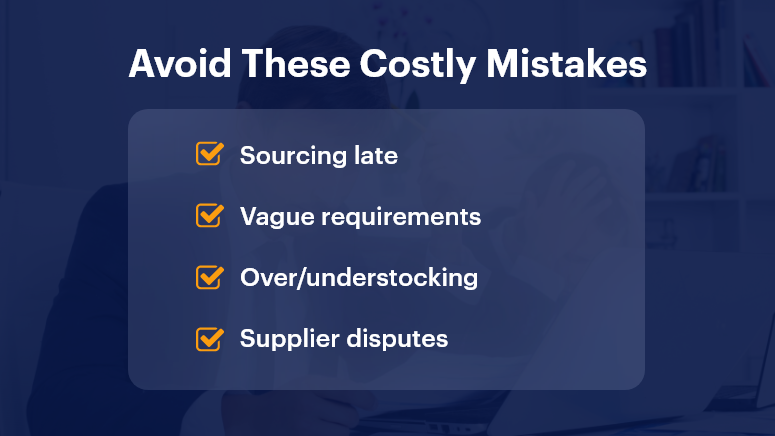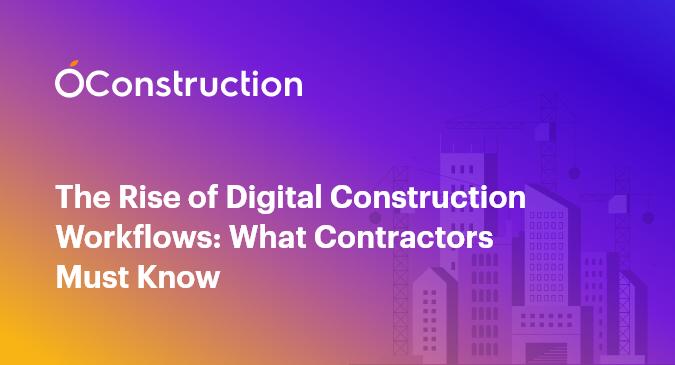In construction, up to 60% of total project costs can be linked directly to procurement — from materials to subcontractor services. Yet, many projects still face delays, budget overruns, or quality issues because of poor procurement planning.
Procurement planning for construction projects isn’t just about buying materials; it’s about securing the right resources, at the right time, for the right price — all while keeping the project on schedule.
In this blog, we’ll cover the critical steps to effective procurement planning, common pitfalls to avoid, and how using an integrated platform like OConstruction can make the entire process more efficient, transparent, and cost-effective.

Why Procurement Planning for Construction Projects Matters
Poor procurement doesn’t just slow things down — it derails entire projects. Late deliveries can halt work, poor-quality materials can require costly replacements, and unclear supplier contracts can lead to disputes.
Why it’s critical in today’s market:
- Tight timelines — Delays can trigger penalties and damage client relationships.
- Rising costs — Volatile material prices make budgeting harder.
- Global supply chain disruptions — Shortages can cause multi-week delays.
Who benefits most from strong procurement planning?
- Project managers who must align deliveries with construction schedules.
- Procurement officers are tasked with securing the best deals without sacrificing quality.
- Contractors who rely on dependable suppliers to meet deadlines.
Real-world examples of procurement challenges:
- Material shortages force teams to source substitutes at higher prices.
- Uncoordinated purchasing causes overstocking or understocking.
- Lack of contract clarity results in supplier disputes mid-project.
With OConstruction’s procurement tracking, supplier management, and real-time analytics, you can spot issues early, compare vendor quotes instantly, and maintain full visibility over procurement progress.
Best Practices for Procurement Planning in Construction
1. Start Procurement Planning Early
Early planning ensures suppliers have enough lead time to meet your delivery schedule.
- Create a procurement schedule aligned with the construction timeline.
- Identify long-lead items (like custom windows or specialized equipment) first.
2. Clearly Define Project Requirements
Vague specifications lead to mismatched orders.
- Document exact material types, grades, and quantities.
- Use digital procurement tools to centralize requirement data for all stakeholders.
3. Evaluate and Shortlist Suppliers Carefully
The lowest bid isn’t always the best choice.
- Check past performance, reliability, and financial stability.
- Maintain an approved supplier database for faster future selection.
4. Leverage Competitive Tendering
Competitive bidding can save costs and encourage transparency.
- Send clear RFQs (Request for Quotation) to multiple vendors.
- Use OConstruction’s tendering module to track and compare responses.
5. Integrate Procurement with Project Management
When procurement data is siloed, coordination suffers.
- Link procurement schedules directly to task timelines.
- Use a unified dashboard for budget, delivery, and progress tracking.
6. Monitor Supplier Performance
Regular tracking prevents delays and quality issues.
- Set KPIs such as on-time delivery rate and defect rate.
- Use supplier scorecards for performance reviews.
7. Plan for Risks and Contingencies
Supply chain issues are inevitable — have a backup plan.
- Maintain a list of alternative suppliers.
- Keep a contingency budget for urgent orders.
Customer Story
For example, Skyline Builders, a commercial construction firm, used OConstruction’s procurement planning module to streamline sourcing for a $12M office complex.
Here’s how it worked:
- Created a procurement schedule directly tied to the project’s Gantt chart.
- Issued RFQs to multiple vendors and compared responses side-by-side.
- Set automated alerts for delivery delays and budget threshold breaches.
The result? Procurement costs dropped by 15%, supplier delivery times improved by 20%, and the project stayed exactly on schedule.
Key Takeaways & Closing Summary
Strong procurement planning for construction projects ensures you get the right resources, at the right cost, exactly when needed.
Key Points:
- Start early — Early procurement prevents last-minute scrambling.
- Be specific — Clear requirements avoid costly mistakes.
- Track performance — Data-driven supplier management improves results.
- Integrate tools — A unified platform connects procurement with scheduling and budgeting.
By applying these strategies and using OConstruction’s procurement planning tools, you’ll avoid delays, control costs, and deliver projects with confidence.



